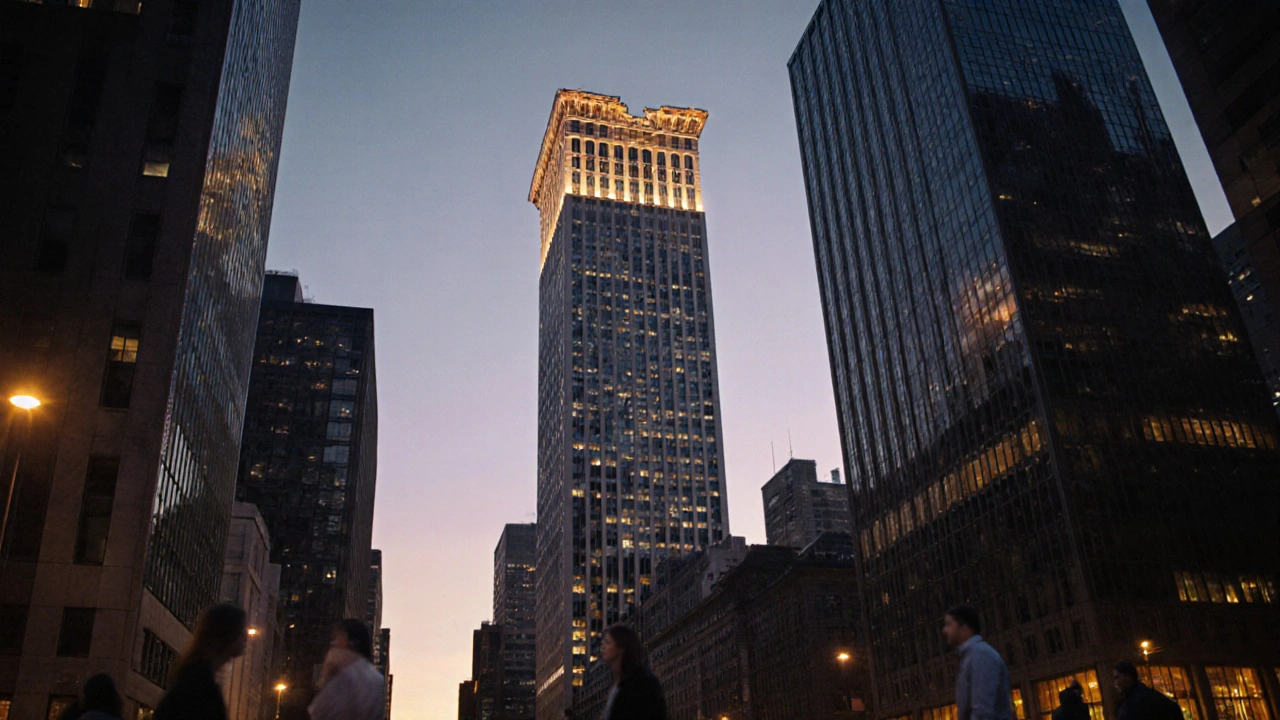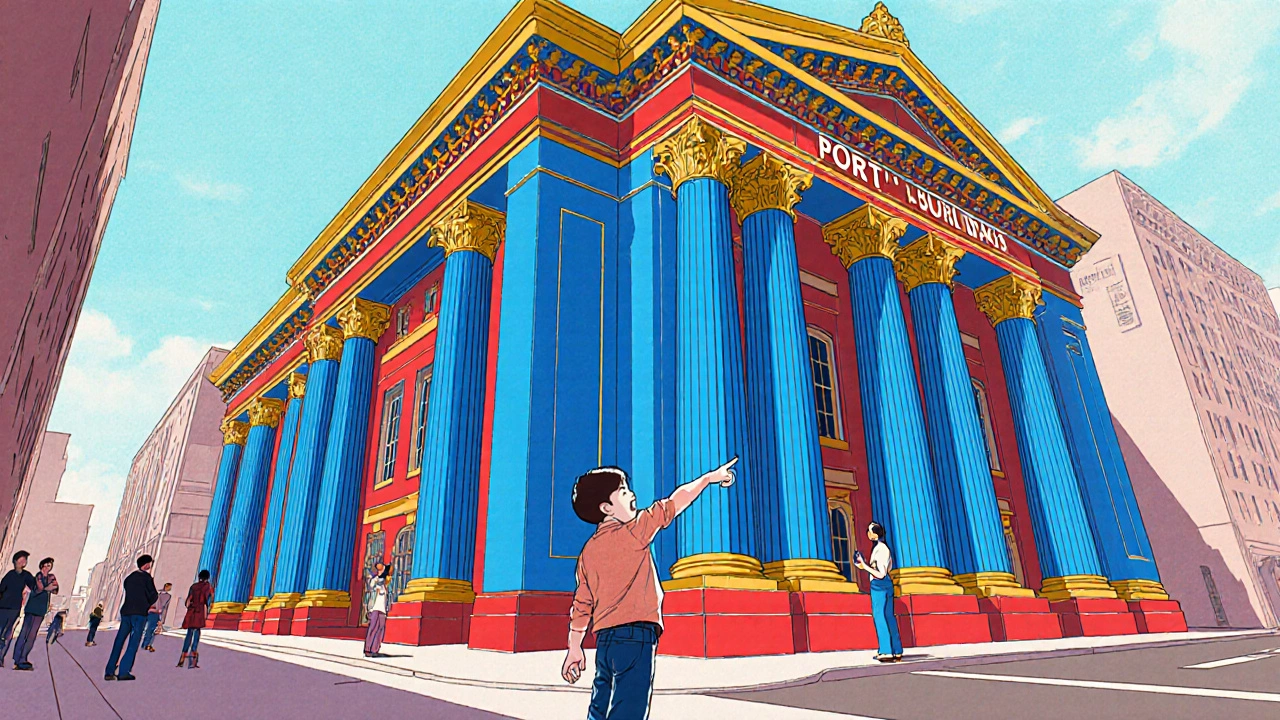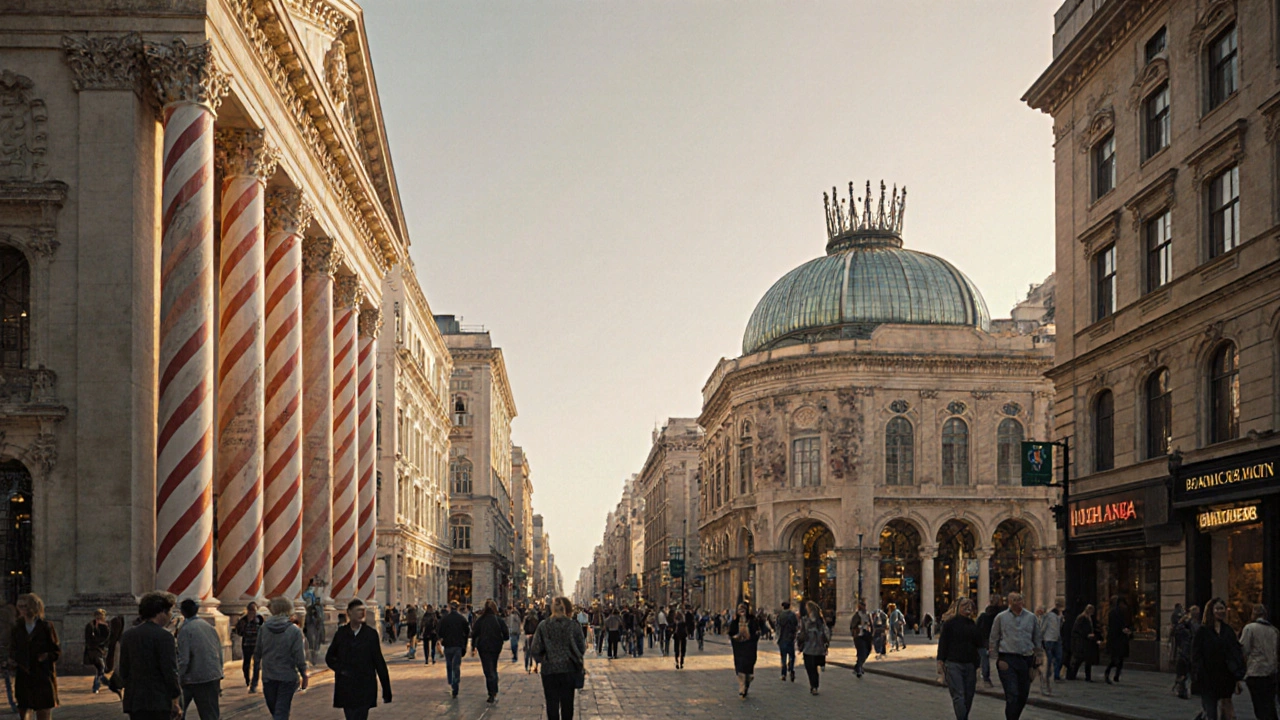How Postmodern Architecture Changed City Skyscapes Forever
 Nov, 3 2025
Nov, 3 2025
Walk through any major city today, and you’ll see buildings that don’t play by the rules. A skyscraper with a broken pediment. A bank shaped like a giant chandelier. A library with columns that look like they’re made of candy. These aren’t mistakes. They’re intentional. And they all trace back to one movement: postmodern architecture.
What Postmodern Architecture Really Is
Postmodern architecture didn’t just tweak modernism-it flipped it on its head. Modernist buildings from the 1950s to 70s were all about clean lines, glass boxes, and the idea that form should follow function. No ornament. No history. Just efficiency. But by the late 1970s, people were tired of soulless towers that looked like they came from the same factory.
Postmodernism said: Why not have fun? Why not borrow from the past? Why not make buildings that tell a story? It didn’t reject modernism-it mocked it, played with it, and mixed it with classical details, bright colors, and absurd shapes. Think of it as architecture with a sense of humor.
It wasn’t just about looks. It was a reaction to the alienation of urban life. Cities were becoming grids of identical towers. Postmodern architects wanted to bring back meaning, context, and human scale. They looked to ancient Rome, Gothic cathedrals, even pop culture for inspiration.
The First Big Statements
The movement really took off with a few bold projects. Philip Johnson’s AT&T Building in New York, completed in 1984, was the first major skyscraper to break the glass-box mold. Its top looked like a broken pediment-like an ancient Greek temple had been chopped off. Critics called it ridiculous. The public loved it. Suddenly, skyscrapers didn’t have to be boring.
Michael Graves’ Portland Building, finished in 1982, was another shock to the system. It was a government office tower, but it looked like a giant toy. Giant columns. Oversized moldings. Bright blue and red accents. It was mocked by architects but became a landmark. People didn’t just pass it-they stopped to take pictures.
These weren’t isolated experiments. They sparked a wave. Across the U.S., Europe, and Asia, architects started treating buildings like canvases. In Barcelona, the Hotel Arts added a crown of curved glass that looked like a giant crown. In Tokyo, the Shibuya Scramble Square mixed traditional Japanese rooflines with futuristic glass. Even small-town banks started using arches, columns, and fake cornices.
How It Changed the Look of Cities
Before postmodernism, cities were uniform. One tower looked like the next. Afterward, every block became a conversation. You could walk down a street and see a building with a Roman arch next to one with a neon sign, then a facade that looked like a 1920s movie theater.
Postmodernism didn’t just add decoration-it changed how cities felt. It made them feel alive. Buildings stopped being silent objects and became characters. They referenced local history. They responded to their neighbors. They joked. They celebrated.
Take the Piazza d’Italia in New Orleans. Designed by Charles Moore in 1978, it was a public square built like a theme park of Italian architecture. Fountains shaped like Roman gods. Columns with neon lights. A giant arch made of stainless steel. It was expensive, quirky, and wildly unpopular with critics. But locals? They used it. Families picnicked there. Kids played on the steps. It became a gathering place-not because it was elegant, but because it was joyful.
This was the real impact: postmodern architecture made public spaces feel human again. It said: Your city doesn’t have to be cold to be modern.

The Rise of Contextual Design
One of the biggest shifts postmodernism brought was the idea that buildings should respond to their surroundings. Modernism ignored context. A glass tower in a historic neighborhood? Fine. Postmodernism said: That’s disrespectful.
Architects started looking at what was already there. In London, the HSBC Building on the Thames used classical proportions and materials to echo nearby 19th-century warehouses. In Sydney, the MLC Centre incorporated sandstone and arched windows to match the older buildings around Martin Place.
This wasn’t just copying old styles. It was dialogue. A postmodern building might use a classical column-but twist it, color it, or make it too big. It acknowledged history without pretending to be it. That balance-respect without imitation-became a new standard for urban design.
Why It Still Matters Today
Postmodernism didn’t last as a dominant style. By the 1990s, critics called it too flashy, too gimmicky. The rise of sustainability and digital design pushed architecture toward minimalism again.
But its DNA is everywhere. Look at the Apple Store on Fifth Avenue. The glass cube is modernist-but the way it’s framed by stone and the attention to detail? That’s postmodern thinking. The V&A Museum’s new entrance in London? It’s a curved glass canopy that looks like a giant ribbon. It doesn’t pretend to be historic-but it honors the museum’s past.
Even TikTok architecture-those viral buildings with wild shapes and colors-is postmodern’s child. Architects today don’t just build for function. They build for emotion. For memory. For Instagram.
Postmodernism taught us that cities aren’t machines. They’re stories. And every building should add a line to that story.

Where You Can See It Today
You don’t need to travel far to find postmodern architecture. In Melbourne, the Rialto Towers’ top floor was redesigned in the 1990s with a golden crown-like structure-clearly nodding to the city’s 19th-century gold rush history. In Singapore, the Far East Organization Building uses red brick and arched windows to echo colonial-era shophouses.
Look around your own city. That mixed-use building with the fake columns and bright awnings? That’s postmodern. That library with the oversized bookshelf facade? That’s postmodern. That hotel with the rooftop garden shaped like a giant hat? Also postmodern.
It’s not always obvious. Some buildings have been painted over, renovated, or rebranded. But if a building makes you smile, or makes you think, ‘Wait, that’s not supposed to look like that,’ you’re probably looking at postmodernism’s legacy.
The Criticism and the Counterpoint
Of course, it wasn’t perfect. Some postmodern buildings were kitschy. Some used historical references in ways that felt disrespectful. Critics called it ‘architectural cosplay.’ Others said it ignored real problems like affordability and climate.
And yes-many postmodern buildings were expensive to build and maintain. The Portland Building, for example, had major water leaks and needed a $100 million renovation by 2015.
But here’s the thing: no movement is flawless. The point wasn’t to build perfect structures. It was to challenge the idea that architecture had to be serious all the time. It opened the door for playfulness, for cultural references, for emotion in design.
Today, we’re seeing a quiet revival. Architects are again asking: How can buildings connect with people? How can they reflect local identity? How can they be more than just containers?
Postmodernism gave us the permission to ask those questions.
What’s the difference between modern and postmodern architecture?
Modern architecture focuses on simplicity, function, and minimal decoration-think glass towers with flat roofs. Postmodern architecture rejects that purity. It mixes styles, adds color, uses historical references, and often includes playful or ironic elements. Where modernism says ‘less is more,’ postmodernism says ‘why not more?’
Is postmodern architecture still being built today?
Not as a dominant style, but its ideas are everywhere. Today’s architects borrow from postmodernism by blending historical elements with modern materials, adding color, and designing for emotional impact. You’ll see it in cultural centers, mixed-use developments, and even tech company headquarters that want to feel human.
Why do some people dislike postmodern buildings?
Some see them as too flashy, gimmicky, or disrespectful to history. Others criticize their high costs and poor durability-like the Portland Building’s leaks. Critics also argue they prioritize style over sustainability or affordability. But supporters say these buildings bring joy and meaning back to cities that had become too sterile.
Can postmodern architecture be sustainable?
Originally, many postmodern buildings weren’t designed with energy efficiency in mind. But today, retrofitting them for sustainability is common. Their strong structural forms and use of durable materials like stone and brick can make them easier to adapt than glass boxes. Reusing and upgrading these buildings is now seen as a green choice.
How did postmodern architecture affect public spaces?
It turned public spaces into places people wanted to be. Before, plazas were empty concrete fields. Postmodernism introduced color, seating, playful forms, and cultural references that invited interaction. The Piazza d’Italia in New Orleans is a prime example-once mocked, now a beloved gathering spot.